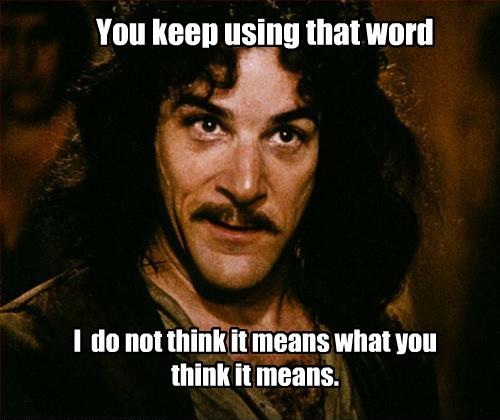Evidence? Where? Those studies are NOT evidence. No tests have ever been performed under real world real tennis playing conditions on a tennis court, AFAIK. Clamping a stationary racquet and tossing balls gently at a heavily lubricated stringbed does not come remotely close to what happens under real world ball-stringbed collisions when swinging the racquet at a high rate of speed hitting the ball hard, which produce all kinds of forces (both magnitude and direction) on the strings and the ball which are not measured under the laboratory conditions used in those studies.
Reading your post, it is even more obvious that you have not read the papers. You clearly have no idea what experiments have been done. It's just not OK to dismiss research without even reading it. I mean, it's your life, but you can't expect people to take your views seriously when you are ignoring all the high-quality evidence in published scientific papers.
One example: The bolded section of your post above. TW University has gone well beyond "tossing balls gently" at lubricated stringbeds. In
this study, published more than two years ago (Hello!), balls were fired at 47 mph at a variety of different string types in a 16x19 pattern. Spin rates were measured with the strings lubricated and un-lubricated. The results?
For the 16x19 pattern, the spin increased for every string — from 19–58%. Any adverse effects of a lesser ball-to-string coefficient of friction did not overcome the topspin facilitation due to lubrication.
Upthread, and repeatedly in other previous threads, you have argued that copoly strings, or strings in open patterns, generate more spin because of increased ball-string friction. I think everyone can see clearly that these experiments with lubricated strings destroy your argument.
Besides, I've seen those videos, and to my eyes the ball has left the stringbed before the strings fully snap back.
Your eyes are wrong. Every scientist studying this, poring over those videos and analyzing them frame-by-frame, see the same thing: The main strings snap back with plenty of time to impart additional topspin on the bal.
Take a racquet strung with full poly and pull the main strings to the side as far as you can with your fingers. Now time how long it takes for those strings you pulled aside to snap back to their original vertical positions. If it takes more than 3 milliseconds, then the ball has already left the stringbed by the time they fully snap back.
This has been done. Don't take my word for it, here is
John Lyons at Wilson talking about string snap back with Tennis.com:
[Tennis.com]: So the big question obviously is: How exactly does this alternative string pattern affect the snap-back effect?
[John Lyons]: It affects it quite a bit. As I alluded to earlier, we spent a lot of time studying high-speed video. We would fire balls at stationary racquets with different patterns—one with a typical 16 by 18 pattern, another with a 16 by 15, both strung with Luxilon Alu Power—and would compare the snap-back. We measured not only the extent of the strings’ deflection—how far they moved—but also the speed at which they deflected and snapped back. (Since we knew that each frame [of high-speed video] was, let’s say, 1/1000ths of a second, and we could measure how far the strings deflected, we were able to calculate distance over time, or their speed.)
And what happens with the 16x15 pattern is that, compared to a 16x18, not only do the strings move a lot further, but they also snap back really violently. It makes sense. With less friction, the strings deflect further, and because they move further out of place, they snap back past their original position. Which increases the amount of rotation that the strings are able to impart on the ball
.
Then ask yourself this - How did Borg produce so much spin with natural gut strung at 80 lbs. in a 65 sq. in. hoop with zero string snap back (and probably zero string movement)?
He produced topspin through ball/string friction. Of course. What is your point? The majority of spin from any string setup is produced by ball/string friction forces! The mains don't have to snap back, or move at all, to impart topspin. But when the mains do snap back they can impart an additional amount of spin, which physicists call "overspin." Overspin is defined as spin that is above and beyond what can be produced by ball/string friction alone.
The lab evidence is abundantly clear. Borg could have produced 15-25% more topspin if he switched to copoly strings in a pattern open enough for them to slide and snapback freely. And he could have produced 50-100% more had he switched to a spaghetti racquet, where the mains have complete freedom to slide sideways and snap back. The spaghetti racquet being the ultimate version of Wilson's Spin Effect racquets.
Finally, upthread I posted a portion of an interview with Babolat's Lucien Nogues, where he says:
Geometric strings such at Babolat RPM Blast and Pro Hurricane Tour do help with additional spin on the ball but the reason is different than what most people actually think. The additional spin doesn’t come from the strings gripping the ball more, but rather from an octagonal cross section string that allows the main strings to “slide” with less effort over the cross strings, which increases the spin. The spin comes from the movement of the main strings rather than the texture of the string.
To this, you replied:
Who said anything about strings snapping back causing spin?

No, he didn't mention snap back. But had you educated yourself on this topic you would know that he doesn't have to. This is because it has been demonstrated in multiple experiments (for example,
here and
here) that if the main strings slide but fail to snap back, or snap back too late, that a counter-spin torque, called a normal force offset, is created which reduces the amount of topspin.
So Babolat's Nogues states that Babolat RPM Blast provides more spin because the shape of the strings allows them to slide better. They didn't design them this way to reduce topspin. Which means that they designed them to slide and snap back freely and efficiently.
I'm done. For three or four years, Breakpoint, you've failed to educate yourself on this topic. The resources - the journal articles and papers at TW University - are right there for you. Some posters don't have the educational background to read and understand these papers, but you were trained as an engineer, or something, so I know you have the capacity. I can only conclude that yours is a case of willful ignorance. Until you educate yourself on this topic, responding to your posts is a waste of my time, or of anyone's time.



